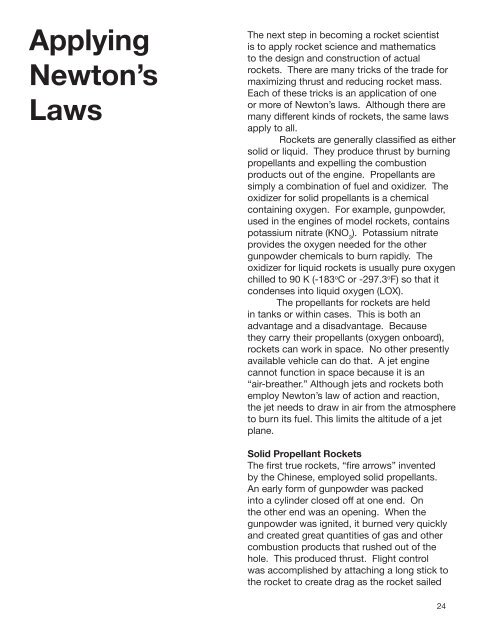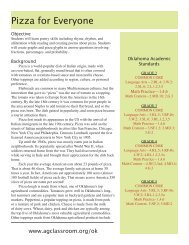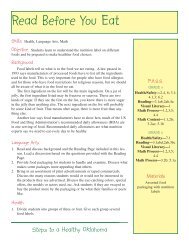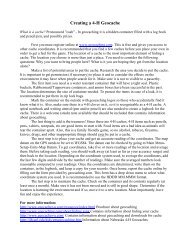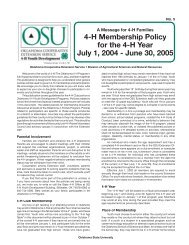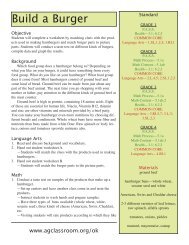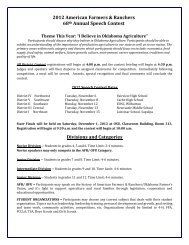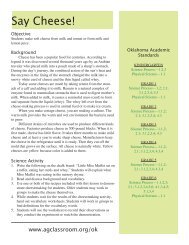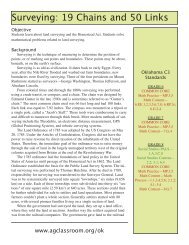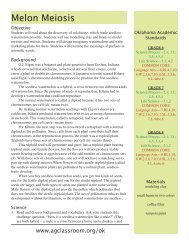You also want an ePaper? Increase the reach of your titles
YUMPU automatically turns print PDFs into web optimized ePapers that Google loves.
Applying<br />
Newton’s<br />
Laws<br />
The next step in becoming a rocket scientist<br />
is to apply rocket science and mathematics<br />
to the design and construction of actual<br />
rockets. There are many tricks of the trade for<br />
maximizing thrust and reducing rocket mass.<br />
Each of these tricks is an application of one<br />
or more of Newton’s laws. Although there are<br />
many different kinds of rockets, the same laws<br />
apply to all.<br />
<strong>Rockets</strong> are generally classified as either<br />
solid or liquid. They produce thrust by burning<br />
propellants and expelling the combustion<br />
products out of the engine. Propellants are<br />
simply a combination of fuel and oxidizer. The<br />
oxidizer for solid propellants is a chemical<br />
containing oxygen. For example, gunpowder,<br />
used in the engines of model rockets, contains<br />
potassium nitrate (KNO 3<br />
). Potassium nitrate<br />
provides the oxygen needed for the other<br />
gunpowder chemicals to burn rapidly. The<br />
oxidizer for liquid rockets is usually pure oxygen<br />
chilled to 90 K (-183 o C or -297.3 o F) so that it<br />
condenses into liquid oxygen (LOX).<br />
The propellants for rockets are held<br />
in tanks or within cases. This is both an<br />
advantage and a disadvantage. Because<br />
they carry their propellants (oxygen onboard),<br />
rockets can work in space. No other presently<br />
available vehicle can do that. A jet engine<br />
cannot function in space because it is an<br />
“air-breather.” Although jets and rockets both<br />
employ Newton’s law of action and reaction,<br />
the jet needs to draw in air from the atmosphere<br />
to burn its fuel. This limits the altitude of a jet<br />
plane.<br />
Solid Propellant <strong>Rockets</strong><br />
The first true rockets, “fire arrows” invented<br />
by the Chinese, employed solid propellants.<br />
An early form of gunpowder was packed<br />
into a cylinder closed off at one end. On<br />
the other end was an opening. When the<br />
gunpowder was ignited, it burned very quickly<br />
and created great quantities of gas and other<br />
combustion products that rushed out of the<br />
hole. This produced thrust. Flight control<br />
was accomplished by attaching a long stick to<br />
the rocket to create drag as the rocket sailed<br />
24


